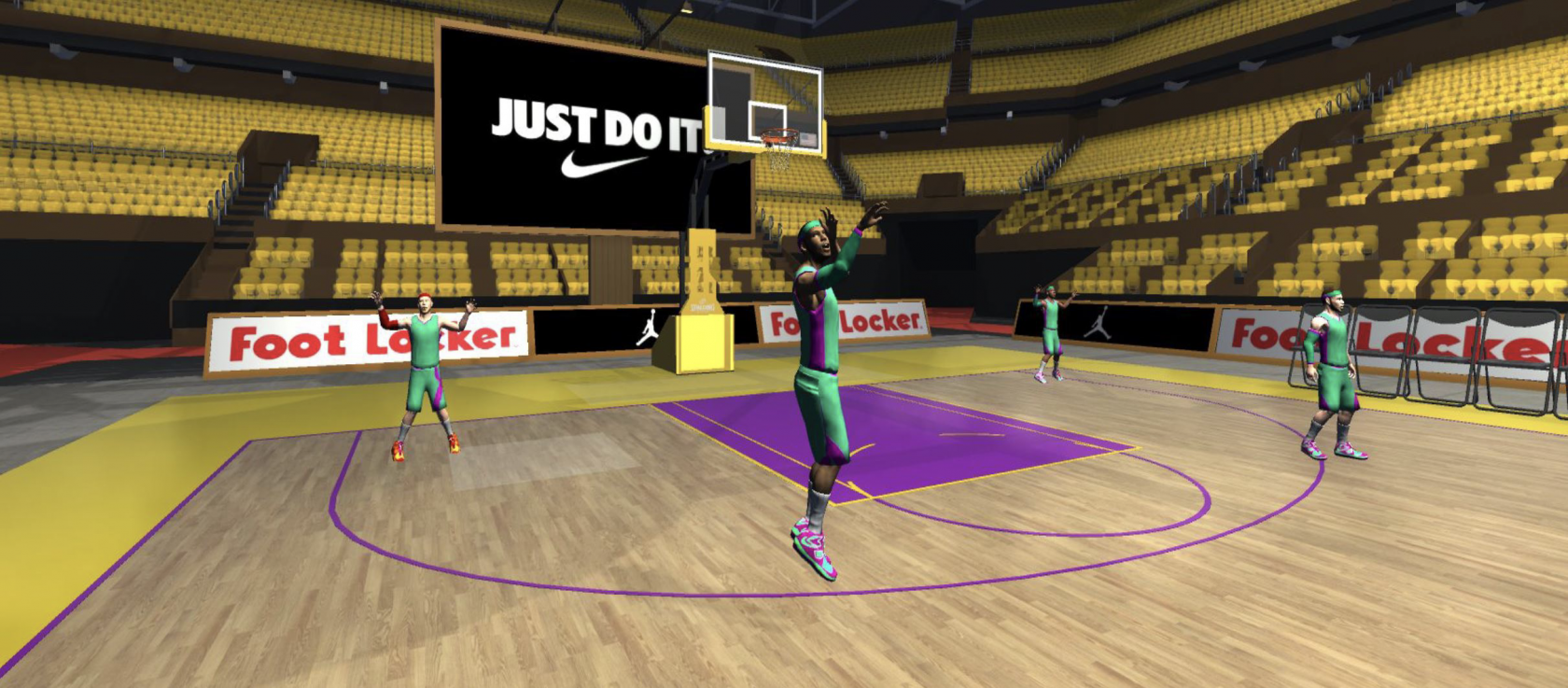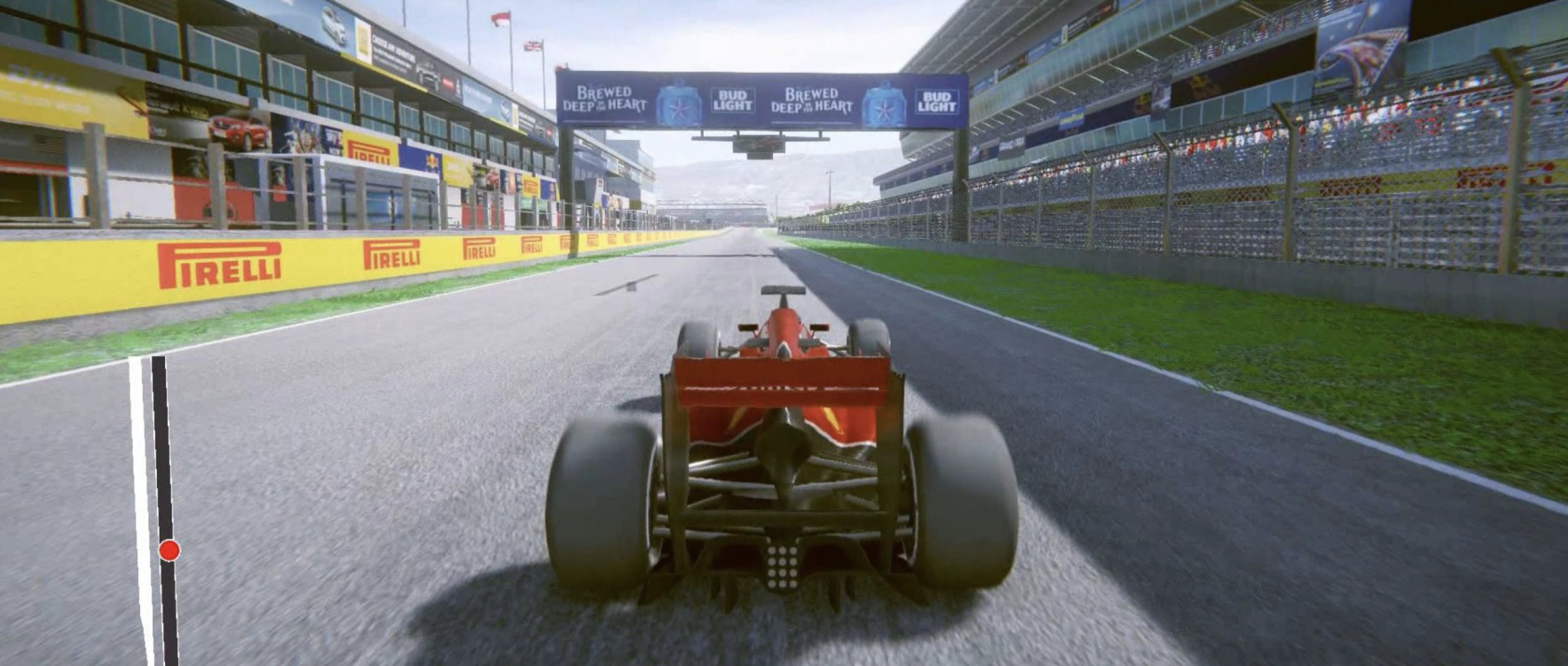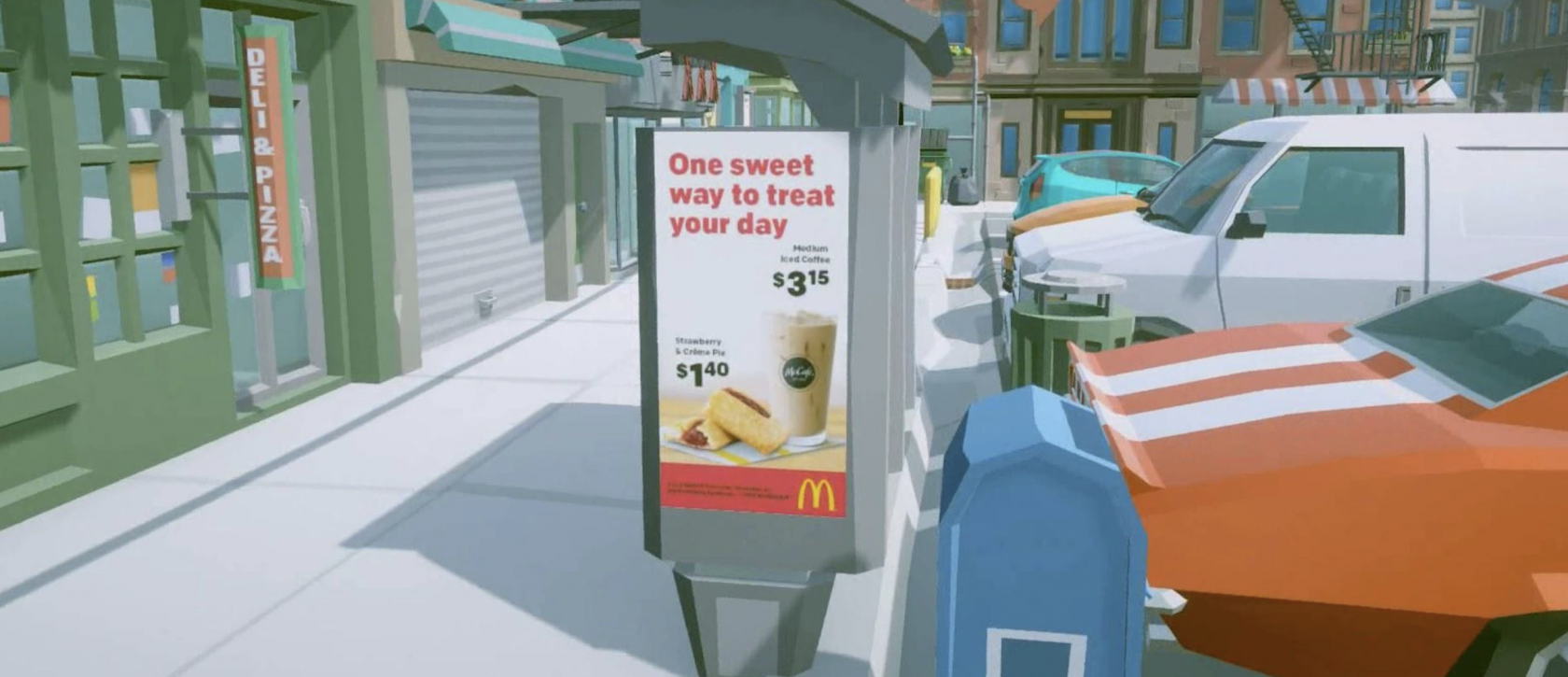Blended in-game ads
What is blended in-game?
In-game advertising refers to advertising in the computer, video, or mobile games. It is often seen as pop-up messages, cut-scenes, on-screen adverts, billboards, background displays.
In-game advertising provides an effective, nonintrusive, and creative way for brands to connect with their target audience. In-game advertising enables advertisers to grow awareness, unlock previously unreachable audiences, all within a brand-safe and immersive context. In-game advertising gives brands a better chance of building valuable relationships based on shared goals.
In-game advertising offers businesses the opportunity to reach out to a very wide demographic with eclectic tastes. This means that in-game ads don’t have to be limited to products targeting a tech-savvy audience. In-game ads are used to promote FMCG products, lifestyle brands, healthcare, and far more. Almost any product, catering to any demographic can be promoted effectively through in-game advertisements because gaming itself has become a universal pastime.
Why blended in-game?
Viewability
In-game ads are integrated seamlessly into the game, there’s no way to skip past them. The interactive nature of games keeps players’ attention glued to the screen as their eyes dart around, taking in every piece of information. Looking away, even for a split second, could negatively impact their game, so they just don’t behave that way. This means that players are always exposed to every ad, even the one on the digital billboard that they pass as they hug the track and race towards the finish line.
The in-game suppliers connected to eskimi is serving only viewable impressions. That means that viewability of your in-game campaign should be 95%+.
Noninstrusive
There was a study done to find out how in-game advertising results in brand recall and brand awareness. Participants were playing two different versions of the game (less interactive - walking around the city and more interactive - walking and shooting), during the playtime they were exposed to some ads. After the game, they were asked to name the brand names they have recognized. The results showed that the higher game interaction results in higher brand recognition and user’s experience. Users did not feel that ads were interrupting the game or any other negative perceptions about ads being in the game.
The brand-safe environment with high engagement
Overall mobile game users hold the highest session lengths across all app categories, the time spent on mobile game apps has increased to 62% due to the current situation. This gives advertisers the chance to create many touchpoints inside a single session. Moreover, brands can benefit from the industry's innovative approach when it comes to mobile creatives there is an opportunity to create engaging and non-intrusive ad formats to create a genuine interest in the audience.
Blended in-game features
Creative options & requirements
In-game advertising allow standard IAB creative sizes.
Banners:
- The most popular sizes: 480x320, 300x250, 640x360, 336x280, 320x480, 320x50, 640x480.
- Other sizes: 768x1024, 1920x1080, 970x250, 728x90, 300x600, 320x320, 160x600, 250x250, 320x100, 360x640, 320x180.
- Recommended formats: PNG, JPEG, JPG, GIF
- Supported formats: PNG, JPEG, JPG, GIF, *HTML, *Tags (DCM, Adform and others) ads that are non-interactive
* Creatives that includes JS is not supported by PC, console and some mobile publishers.
Rich Media:
Eskimi Rich Media ads are an essential part of the advertising. More than 50% of ad opportunities will support Rich Media ads. Reach out to your account manager to understand the opportunities in your market. In-game ads do not support interactive Rich Medias. Also, Rich Media ads are only available on mobile games, PC & console games do not support these ads.
Below you will find a list of Rich Media ad formats that are supported by in-game environment:
- 3D horizontal: https://drive.google.com/file/d/1WM07tMyEZZkenEBugoejXJXCN5VcpoWM/view?usp=sharing
- Page flip: https://drive.google.com/file/d/1lOnqCi0_b76uuJSKsbI6QYjxNDg5EcS7/view?usp=sharing
- 3D cube: https://drive.google.com/file/d/16typYM_4y6lTRZAW5egWtOHmA6iJg7P3/view?usp=sharing
- Animated cube: https://drive.google.com/file/d/1l2LXiBPxiV_yDo_ZiGt8TC24t71OOYBD/view?usp=sharing
- Glitch: https://drive.google.com/file/d/1L49WkwBRSwpM5PgDiuTc0xP_Og_q3rrc/view?usp=sharing
- Billboard: https://drive.google.com/file/d/1yGkhlmTRUx8Rs4wbb3DdjuOC5DOr-zyN/view?usp=sharing
- Slider: https://drive.google.com/file/d/1AEJoyNoQEhkedmWQcPz-M0RDhaX3odn9/view?usp=sharing
- 3D dancing: https://drive.google.com/file/d/1TGD3uYh4W8XRqHx5JmPX2lZNvJe5o9Jk/view?usp=sharing
- Parallax cube: https://drive.google.com/file/d/16dhGoWszeNg3ldXrnBVRjZjFGz6SzdYm/view?usp=sharing
- Parallax triangle: https://drive.google.com/file/d/1c6YMCvTSIWVWuI4etHwlI1_x0eYmSzcr/view?usp=sharing
- 3D cube vertical: https://drive.google.com/file/d/15t1ShmiwDBwAmcMcXkhpbGSjb7CHQ_Jv/view?usp=sharing
VAST video:
- Recommended video size: 320x480, 480x320, 1024x768, 768x1024
- Recommended askect ratios: 16:9, 4:3, 9:16, 3:4
- Supported format: mp4
- Recommended video file size: less than 15MB. The platform supports files up to 45MB, however it is not recommended
- Recommended video duration: 3 to 30 seconds. *The most successful video ads are 6-15 seconds long
Targeting
In-game advertising supports all the programmatic advertising options except site targeting, first party remarketing, site remarketing.
Bidding
In-game advertising is based on the CPM bidding method.
Reporting
In-game report includes all standard metrics (impressions, reach, etc.), video metrics: first quartile, midpoint, third quartile, complete, VTR, CPV, views, pause resume. It also includes all the standard programmatic analytics - operator, OS, browser, device price, SEC, location, gender, age and etc.
Setup & optimisation
In-game advertising is reach through several suppliers via open auction. Additional supply can be reached through PMPs. The standard optimisation can be applied. Auto CPC, CTR is limited due to a portion of non-clickable ads. While CPA, CPI optimisation cannot be applied.
Limitations & troubleshooting
- Blended in-game ads have been seen as non-intrusive advertising. However, new technologies are emerging which allow to enable ad clickability. Around 30%-40% of ad opportunities allow to click the ads in the live game environment.
- In-game ads are displayed on apps only.
- In-game supports tobacco, alcohol and betting advertising only through pre-agreed PMPs.
- PC and console devices do not support DMP targeting.
- Viewability cannot be tracked for VAST video ads on in-game.
3rd party trackers
If you would like to track viewability on your MOAT dashboard, please inform adops@eskimi.com before the campaign starts. The Adops team, will share the advertiser's ID. You will then need to reach out to your MOAT account manager and ask to enable Anzu's in-game viewability metrics.
Anzu supports JavaScript based 3rd party trackers on open auction buying. Private Market auction has to go along with 1x1 pixels. Gadsme & AdInMo fully support JavaScript & 1x1 pixel based 3rd party trackers on open auction & Private Market auction.
Clickability
Blended in-game ads have been seen as non-intrusive advertising. However, new technologies are emerging which allow to enable ad clickability. Around 30%-40% of ad opportunities allow to click the ads in the live game environment. Clickable blended in-game ads are available only through Gadsme.
Impression Calculation
If you have ever plaid a game an saw an in-game ad, you should have noticed that more than 1 ad is shown during the session of the visible screen. A natural question will come to every advertisers mind - will I be paying for all of these ads? The answer is no and we want to explain why.
In-game is a new media channel which is not yet regulated by organisations like IAB. Without any regulatory body SSPs and publishers can implement their own in-house standards and monetise the supply in the most efficient way.
For the time being SSPs give the right for the publisher to decide how to calculate impressions. However, some rules are applied for example only 2 impressions can be served through a visible session. For racing and sports games will do shared placements (during 1 continuous second many ads will be shown, but all of them will be considered as 1 impression). Such kind of model increases brand visibility. For such situations where multiple placements in the game have the same creative visible to the player at the same time, per the IAB in-game viewability criteria that we adhere to these will only be counted as one impression.
Eskimi in this case doesn't have any control how the impressions are calculated by the publisher. We continue to understand 1 ad as 1 impressions as this is how bidding works right now for in-game advertising. Eskimi frequency capping for in-game advertising will work the same way as it works right now. However, due to in-game nature the user might see more ads (shared placements) than the reports show. We hope to see more action from IAB who would standardise impression calculation for in-game advertising (ex.: based on genres or implement good practices from DOOH advertising).
In sum, to some extent impression calculation depends on the publisher. Some regulations are in place by the SSP, but their is still a need for market standard which we home to see in the upcoming years.



